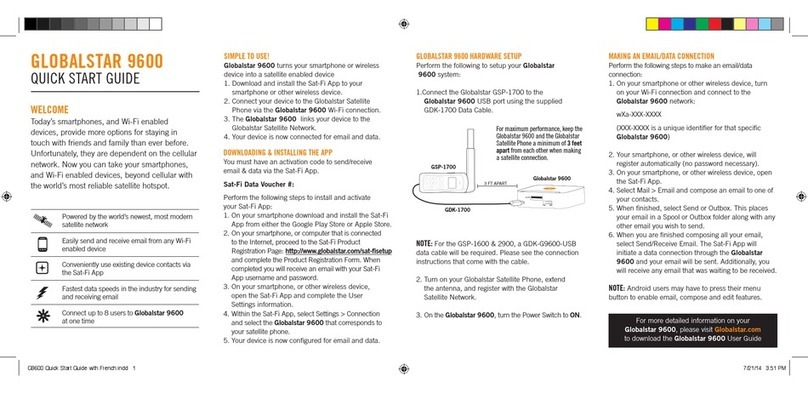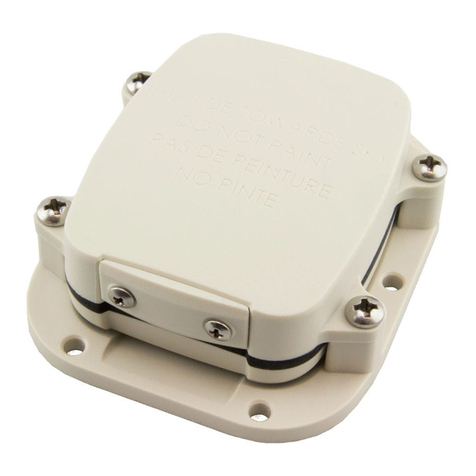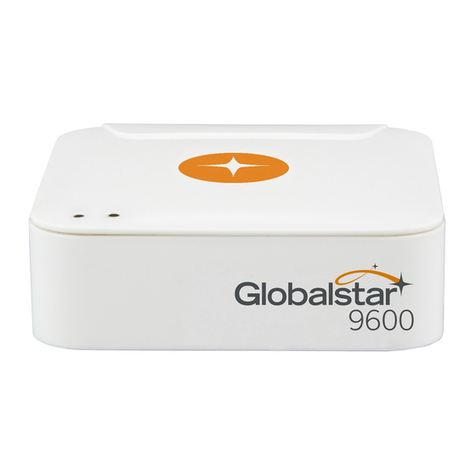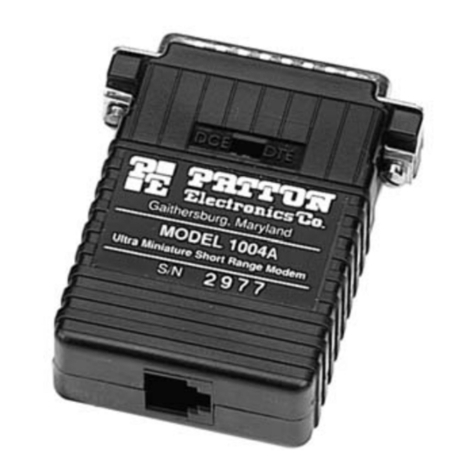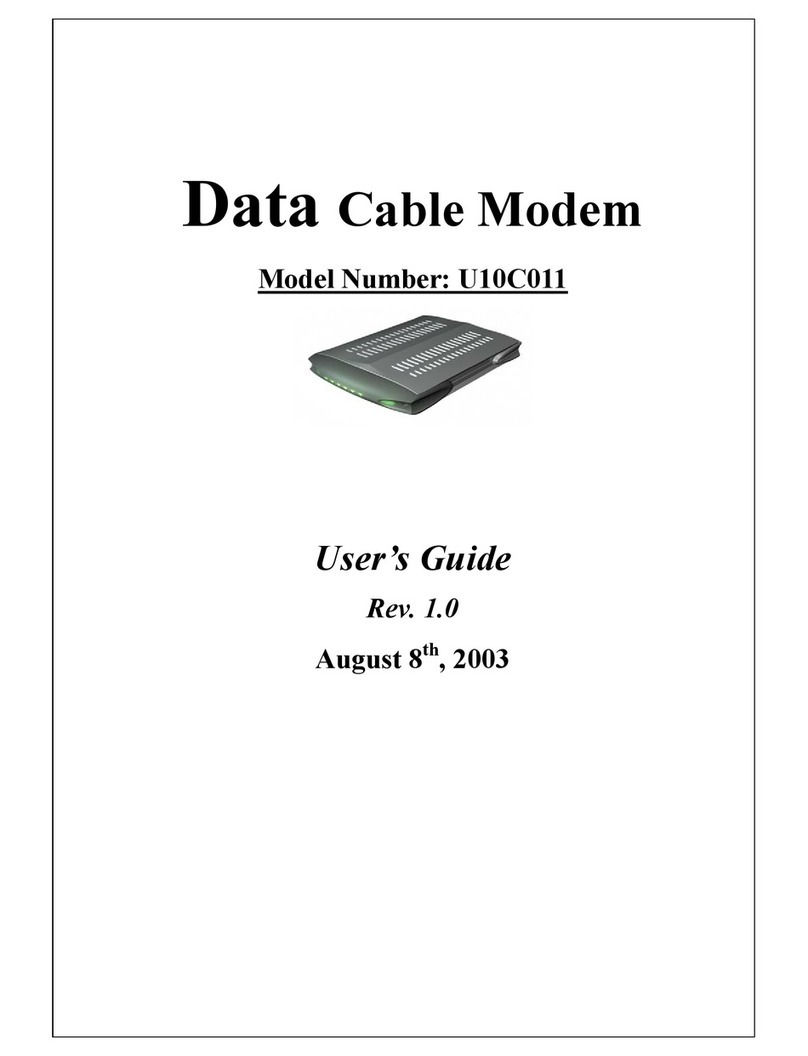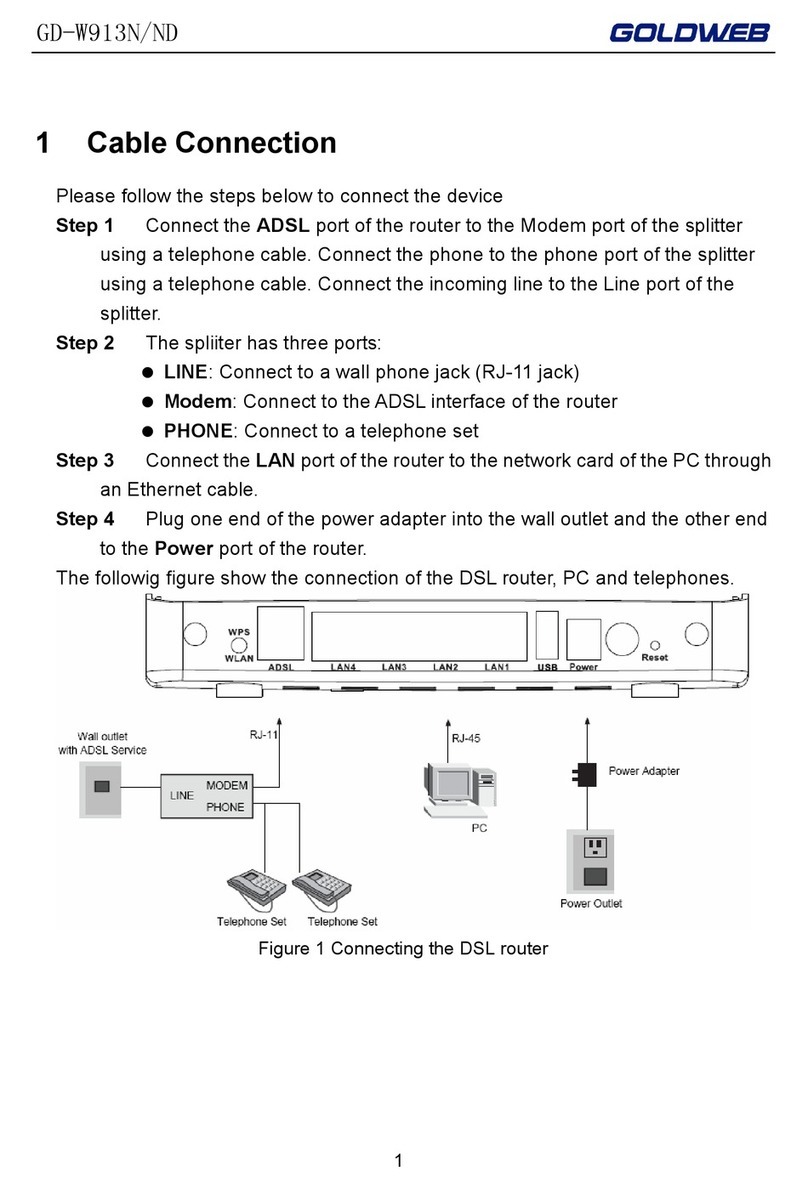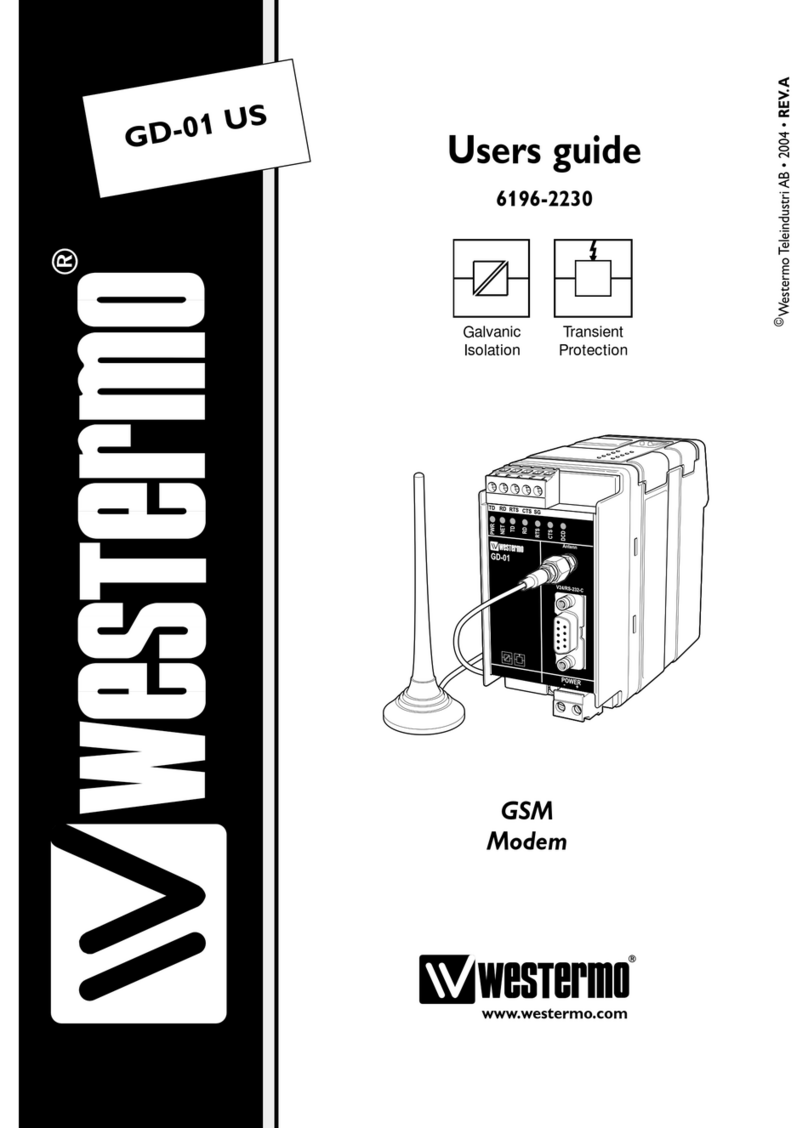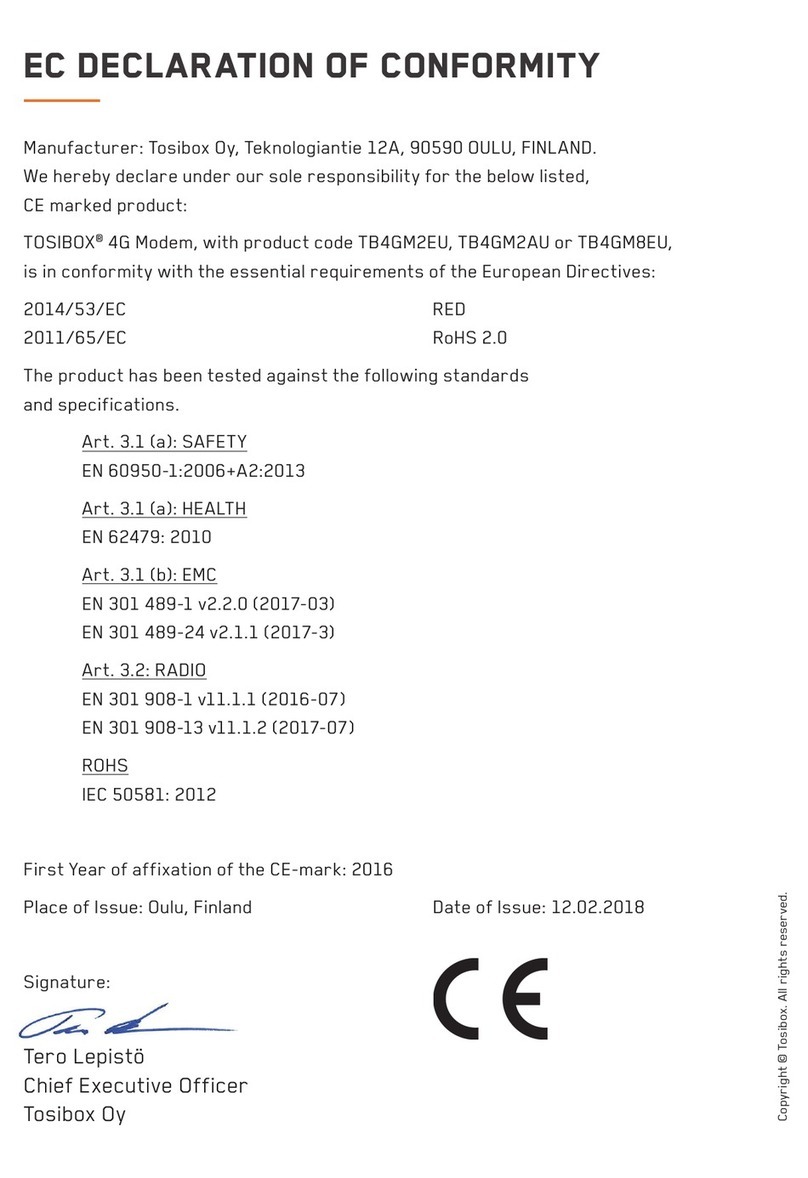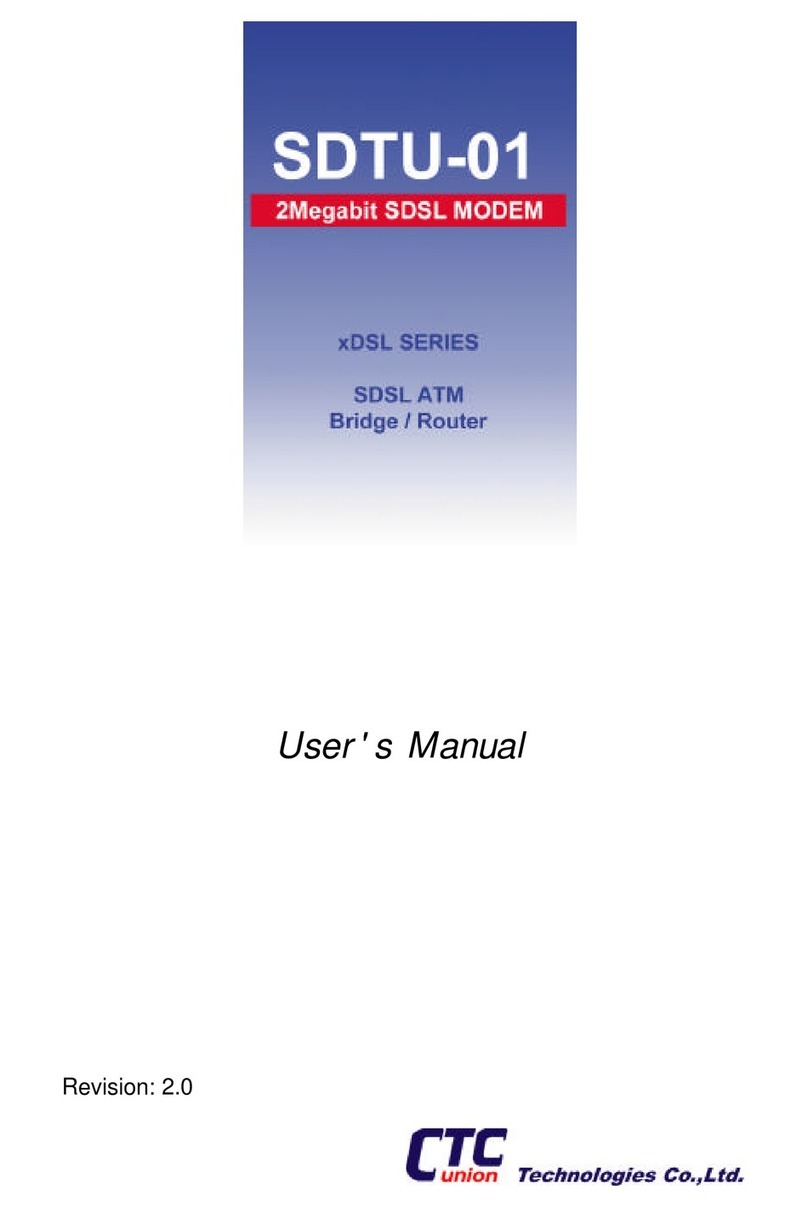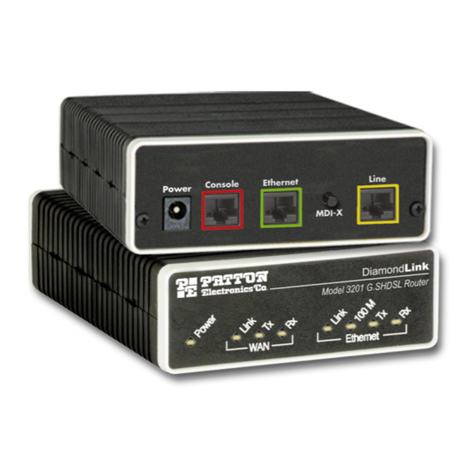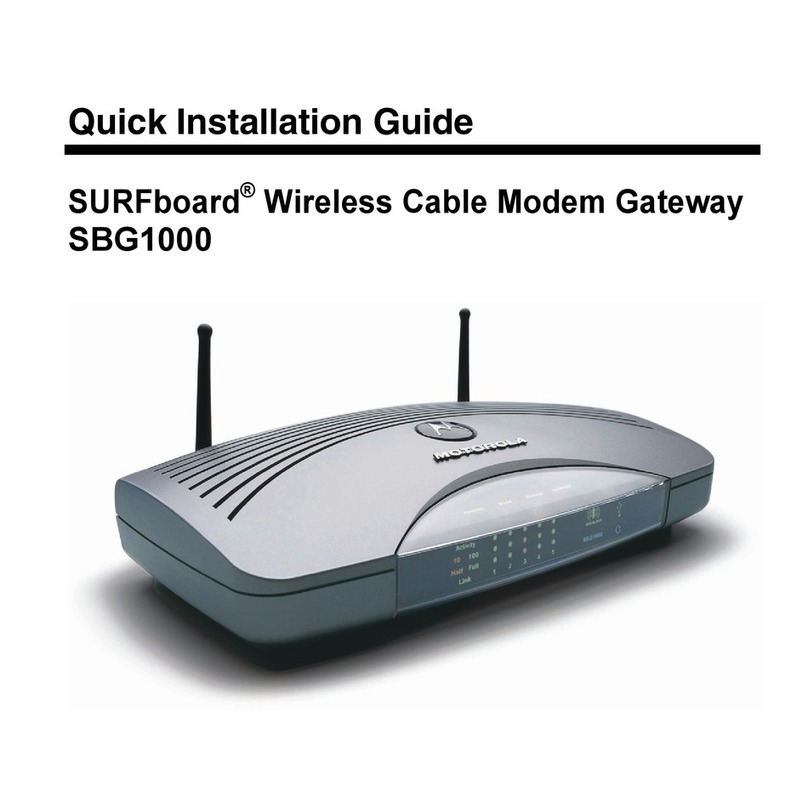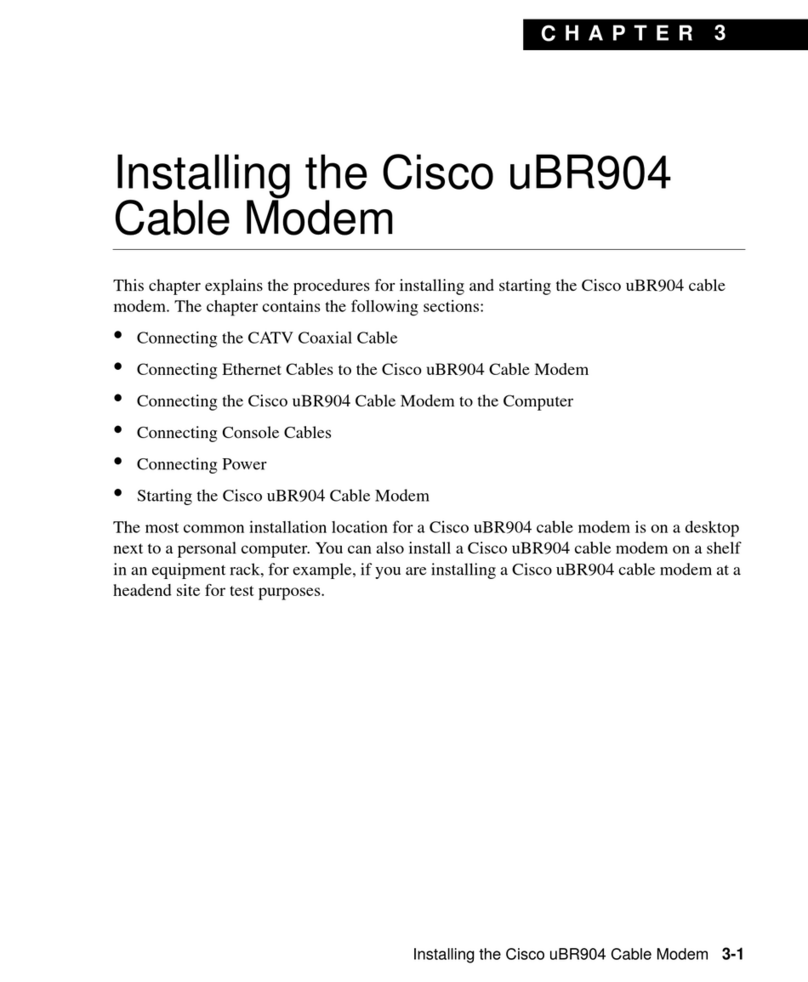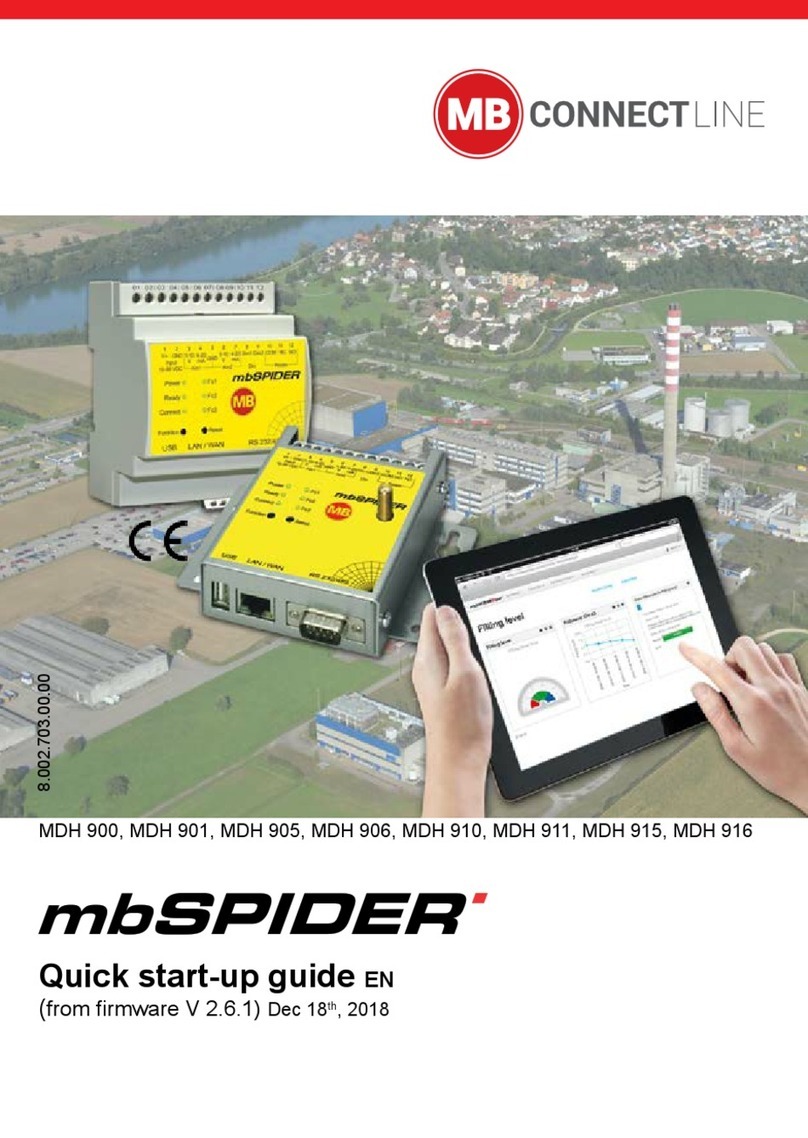Globalstar STX3 User manual

USER MANUAL
STX3 DEVELOPMENT KIT
WITH BLE TECHNOLOGY
9150-0137-01 R-2

TABLE OF CONTENTS
INTRODUCTION........................................................................................................................ 1
PURPOSE ..........................................................................................................................................................1
APPLICABLE DOCUMENTS .................................................................................................................................1
DEV KIT INCLUDES ............................................................................................................................................1
Dev Kit Board..............................................................................................................................................1
Long USB Y-Cable........................................................................................................................................1
DESCRIPTION ....................................................................................................................................................2
Key Features of the STX3 Dev Kit with BLE....................................................................................................2
APPLICATION ........................................................................................................................... 3
OPERATION OF GLOBALSTAR COMMERCIAL IOT NETWORK .................................................................................3
DEV KIT BLOCK DIAGRAM ..................................................................................................................................3
DESIGN DETAILS ...................................................................................................................... 3
Location of the features on the Dev Kit ..........................................................................................................4
DEV KIT SCHEMATIC ..........................................................................................................................................5
DEV KIT COMPONENT LOCATION .............................................................................................. 6
SETTING UP THE DEV KIT......................................................................................................... 7
DOWNLOADING SMARTPHONE APPS ..................................................................................................................7
SOFTWARE TOOLS FOR DOWNLOADING FIRMWARE ONTO THE DEV KIT ..............................................................7
QUICK TEST OF DEV KIT OPERATION ..................................................................................................................8
Steps for the Quick Test ...............................................................................................................................8
USING THE SERIAL INTERFACE WITH THE DEV KIT ............................................................................................8
USING THE STX3 DK-BLE SMARTPHONE APP WITH THE DEV KIT......................................................................10
SUMMARY OF STX3 COMMANDS ......................................................................................................................12
NOTES .....................................................................................................................................................12
HARDWARE DESCRIPTION ...................................................................................................... 13
STX3 Module.............................................................................................................................................13
Bluetooth..................................................................................................................................................13
Power Supplies..........................................................................................................................................13
Dev Kit Power Circuitry...............................................................................................................................14
LED’s........................................................................................................................................................14
Buttons.....................................................................................................................................................14
Sensors.....................................................................................................................................................15
USB Interface ...........................................................................................................................................16
Connector Interfaces ..................................................................................................................................16
Test Points ................................................................................................................................................16
REFERENCES ......................................................................................................................... 17
REGULATORY APPROVAL ........................................................................................................ 18
RADIO ASTRONOMY SITE AVOIDANCE...............................................................................................................18
REGULATORY NOTICES ....................................................................................................................................18
APPENDIX A – STX3 DEVELOPMENT KIT SCHEMATIC ................................................................. I
APPENDIX B – STX3 DEVELOPMENT KIT BILL OF MATERIAL LISTS ............................................ X
TRANSMITTER BOARD BILL OF MATERIAL ..........................................................................................................X
MAIN BOARD BILL OF MATERIAL.......................................................................................................................XI

11
PURPOSE
This document describes the physical, electrical, and functional characteristics of the STX3 Development Kit with
Bluetooth Low Energy technology and operation of its associated serial interface and smartphone applications. The
information contained in this document is intended to provide the end user with the necessary technical information
required to use the STX3 Development Kit with BLE, hereby referred to as the Dev Kit.
This document is intended to be used by engineers and technical management and assumes a general knowledge
of basic engineering practices by the user.
APPLICABLE DOCUMENTS
• Globalstar STX3 User Manual
• Globalstar STX3 Development Kit with BLE Technology Quick Start Guide
• Globalstar STX3 Development Kit with BLE Software Design Guide
DEV KIT INCLUDES
When opening the Dev Kit box, it will include the following items shown:
INTRODUCTION
DEV KIT BOARD
Transmitter and Main board stacked on top of each other. The Dev Kit is pre-
programmed with demonstration firmware that supports the BLE app, serial
command communication and quick test function.
LONG USB Y-CABLE
The USB Y-cable is used for connecting the Dev Kit to the host computer.

22
DESCRIPTION
At the heart of the Dev Kit is the Globalstar STX3 module. The STX3 module is a simplex Satellite transmitter
designed to send small packets of user defined data to a network of low earth orbiting (LEO) satellites using the
Globalstar Commercial IoT Network. The received data is then forwarded to a user defined network interface that
may be in the form of an FTP host or HTTP host where the user will interpret the data for further processing.
The STX3 is a surface mount module and it is mounted on the bottom side of the Transmitter board just under the
Taoglas antenna. The STX3 is electrically connected to the Nordic Bluetooth processor through the two headers that
attach the two PCBs of the Dev Kit together. Also, the Main PCB provides power, an RF connection to the transmit
antenna, and communications with a host processor which will control the operation of the STX3.
KEY FEATURES OF THE STX3 DEV KIT WITH BLE
• Globalstar Satellite Transmitter (STX3)
• nRF52832 flash-based ANT/ANT+, Bluetooth® low energy SoC solution
(https://www.nordicsemi.com/Products/Low-power-short-range-wireless/nRF52832)
• 2.4GHz Chip Antenna for Bluetooth
• Multiple Interfacing Options: BLE, USB, STX3 UART
• User Controllable LEDs and button
• Humidity Sensor
• Temperature Sensor
• (3-axis) Accelerometer
• Analog adjust potentiometer
• Expansion header
• Sample code and hardware files available upon request
• Mobile App available for iOS and Android

33
OPERATION OF GLOBALSTAR COMMERCIAL IOT NETWORK
The STX3 Dev Kit transmits messages over the Globalstar LEO (Low Earth Orbit) satellite network. These satellites
continuously orbit the planet and can communicate with Globalstar devices that are within range of its current
position. For additional information about the operation of the Globalstar network, please see the STX3 User Manual.
DEV KIT BLOCK DIAGRAM
The block diagram of the Dev Kit is shown below:
The Dev Kit design is a basic implementation of the STX3 module with a power source (host computer), a USB
interface, user LEDs and buttons and a few peripheral sensors. The Dev Kit is a robust extension of the Reference
Design described in the STX3 User Manual.
The Dev Kit allows the hardware designer or firmware developer the platform to easily evaluate the STX3 and provide
a platform for quickly creating new products.
The block diagram shown in Figure 1 represents the features of the two boards and interfaces.
• Transmitter Board - The transmitter board consists of the STX3 module, patch antenna, and power supply for
the STX3 RF transmitter. A standard 4 signal UART interface (not RS232) is the direct method to communicate
with the STX3 module. The STX3 module includes test pins that make it easy to quickly verify the functionality of
the satellite communication.
• Main Board - The main board includes the Bluetooth Low Energy (BLE) microcontroller by Nordic
Semiconductor, accelerometer, temperature/humidity sensor, resistive potentiometer, two buttons, two LED’s,
USB interface, and expansion port.
Figure 1 - STX3 Dev Kit with BLE Block Diagram
APPLICATION
DESIGN DETAILS

44
LOCATION OF THE FEATURES ON THE DEV KIT
A. Satellite Patch Antenna for STX3
B. Temperature/Humidity Sensor
C. Accelerometer
D. User button. Pressing button initiates STX3 test message packet to be transmitted
E. Reset button, for Nordic processor
F. Green and Red Indicator LED’s connected to processor
G. JTAG(SWD) programming header for Nordic processor
H. BLE chip antenna
I. Green LED indicates when RF power supply is enabled. LED is only ON during STX3 transmission
J. Expansion Header connected to processor
K. Analog potentiometer
L. USB connector, for applying power and serial terminal interface
M. Label with ESN number. Required for registration of STX3 module in Globalstar network
N. Green LED, indicates voltage output from main power supply
O. Two pin header (disables main power supply when shunt is connected across both header pins)
A
B
C
D
E
F
G
H
I
J
K
L
N
M
O

55
DEV KIT SCHEMATIC
The schematic is shown in Appendix A. The schematic consists of 9 pages organized with pages 3-5 for the circuitry
on the Transmitter board and pages 5-9 for the circuitry on the Main board. The descriptions below explain a high-
level description of each schematic page and its associated circuitry:
1. Title Page (page 1)
Includes notes on changes between the revisions of the schematic and the Table of Contents for the schematic.
2. Block Diagram (page 2)
Hardware architecture of the boards with interfaces to each of the boards.
3. STX3 Transmitter module (page 3)
This includes the STX3 transmitter with interface circuitry. All of the circuitry on this page is located on the
Transmitter board.
4. RF Power supply (page 4)
The power supply dedicated for the RF section of the STX3 module. The buck/boost power supply is enabled
and disabled by the STX3 module during transmission. The power supply is disabled when the STX3 is not
transmitting. Review the STX3 data sheet on details regarding time the RF power supply is enabled. All of the
circuitry on this page is located on the Transmitter board.
5. Interface Connector and Expansion (page 5)
This page includes the interface headers between the Transmitter board and the sockets on the Main board.
Also, included are the expansion header connected to the Nordic processor and a header that interfaces directly
with the STX3 module.
6. BLE Nordic processor (page 6)
This page includes the Nordic BLE processor, BLE chip antenna, processor controlled LED’s, SWD JTAG header,
reset button, user button, and all supporting components for the processor. All of the circuitry on this page is
located on the Main board.
7. Sensors (page 7)
The sensors include 3 axis accelerometer, humidity/temperature sensor, and analog adjust resistor
potentiometer. All the circuitry on the page is located on the Main board.
8. USB and Power Input (page 8)
The USB port provides power to the Dev Kit and allows for terminal communication to the Nordic processor. All
the circuitry on this page is located on the Main board.
9. Power Supply (page 9)
This is the main power supply for the Dev Kit and converts the USB 5V power to 3.3V. The 3.3V from this supply
is used by Transmitter and Main board. On the Transmitter board it supplies the logic voltage for the STX3
module, and supplies voltage for all of the circuitry on the Main board. Please note the 3.3V voltage does not
supply power to the RF transmitter of the STX3 module on the Transmitter board. All the circuitry on this page is
located on the Main board.

66
Figure 2 - STX3 Dev Kit Component Location - Top Side of PCB
Figure 3 - STX3 Dev Kit Component Locations - Bottom Side of PCB
DEV KIT COMPONENT LOCATION
PARAMETER TEST CONDITIONS MIN TYP MAX UNIT
STX3, TX output power -40 to +85° C, VRF=3.3 volts 18.0 18.5 19.0 dB
STX3, Transmit mode supply
current, Transmitter board -40 to 85º C, VRF=3.3 volts 315 325 350 mA
Operating Temperature Range 0-40 C
Power Supply Operational Range 1.8V - 5.2V
Table 1 - STX3 Dev Kit Operating Conditions & Parameters

77
SETTING UP THE DEV KIT
There are 3 main communication interfaces for the Dev Kit. These are BLE, USB and the user push-button.
For controlling operation of the Dev Kit, a user may use either the downloadable smartphone app (iOS or Android)
or the serial interface. Commands are used to send information over the simplex network, read from the on-board
sensors, and monitor the internal operation of the STX3. Refer to the STX3 User Manual for a complete description
of all commands.
DOWNLOADING SMARTPHONE APPS
Globalstar provides a free smartphone App that allows BLE communication with the Dev Kit. The app is available on
the Apple App Store for iOS and Google App Store for Android. Search either app store for Globalstar and locate the
one named STX3DK BLE. After downloading the app, enable Bluetooth on your phone; as the STX3DK-BLE app can
only communicate with the Dev Kit if Bluetooth is enabled on your phone.
The STX3DK-BLE app icon is shown below.
SOFTWARE TOOLS FOR DOWNLOADING FIRMWARE ONTO THE DEV KIT
The Nordic nRF52832 processor is pre-programed with firmware that supports:
a. Communication with the BLE app
b. Terminal commands with a host computer using the USB connection
c. A quick test feature
The Dev Kit supports developing your own firmware using the development environment of your choice but using
the Nordic SDK environment is recommended.
The Dev Kit was designed for easy connection using the Segger JLink tool:
SEGGER J-Link Tool and Software - The J-Link tool is helpful to debug and program the Nordic processor. The
J-Link tool is not included with the Dev Kit but can be purchased directly from Segger (or Digikey, Mouser, etc.).
The Dev Kit uses the SWD interface (SWDIO, SWCLK, Reset, Ground) to interface with the Nordic processor. On
the Main board, reference designator J10 is a 2x10 header that matches the SWD interface pin out of the Segger
J-Link tool.
The main board also includes test points TP19, TP20, TP21, and TP23 that are connected to SWD signals. This will
allow for connecting to other tools of your choice.
Additional information regarding the programming of the Dev Kit can be found in the STX3 DK-BLE Software Design
Guide and is available from your Globalstar representative.
Figure 4 - STX3DK-BLE App Icon

88
QUICK TEST OF DEV KIT OPERATION
The quick test will have you receiving a message from the STX3 message within minutes. It is recommended that
you run the quick test after first receiving the Dev Kit. The quick test does not require the smartphone App and will
provide a quick method for sending a test message packet through the Globalstar network. After registering the ESN
for your Dev Kit with Globalstar, the network will direct your messages from the Dev Kit to what you designated with
your provided route (email, URL, etc.). The Dev Kit will need to be connected to a host computer for powering it up.
STEPS FOR THE QUICK TEST
1. Place Dev Kit board in a location outside with a clear view of the sky.
2. Connect the supplied host computer to the development kit using the provided USB Y-cable.
3. Once power is applied to the Dev Kit you will see three LEDs illuminate. The blinking LEDs (LD3 & LD4) indicate
that the processor is running and the system is ready. The solid green LED (LD2) will indicate the main power
supply is enabled. The processor will boot in approximately 2 seconds.
4. Simply press the USER button located on the Main board of the Dev Kit. After pressing the USER button, a
green LED(LD1) on the Transmitter board will turn on for approximately 1 second and red LED on the main
board will stay on. The STX3 is transmitting when this green LED is on. The STX3 module will transmit the same
test message packet 3 times with a random delay between messages of 5-10 minutes. Each time the STX3
transmits, the green LED will briefly turn on and the message will be transmitted. The red LED (LD3) will stay red
until all 3 messages have been transmitted.
5. The route used for the registered ESN of the Dev Kit will receive the test message packet. It may take between to
5-20 minutes to receive the message.
The quick test transmits the test message packet as defined in the STX3 User Manual.
USING THE SERIAL INTERFACE WITH THE DEV KIT
When interfacing a host computer to the Dev Kit, two USB ports on the host computer or USB hub are required.
Use the USB Y-cable provided with the Dev Kit to connect between the Dev Kit and the host computer. Both Type-A
USB connectors must be connected to the host computer.
The Dev Kit will appear to the host computer as a virtual COM port and will be ready to communicate with the
following settings.
• Baud Rate - 115200
• Bits - 8
• Parity - None
• Stop bits – 1
A serial terminal program (for example, puTTY) can be used to communicate and configure the device. Once
connected, the “?” command can be used to display a list of command options.
A simple, text-based command infrastructure has been built to provide these examples. Each command has a
unique command name, followed by one or more arguments. The end of the command is indicated by end of line
characters. This same serial command interface is used for both BLE and USB communications.

99
COMMAND SYNTAX DESCRIPTION
Help ? Display a list of the available commands with brief descriptions.
Send Data data <payload>
Uses the serial packet command format to send a command using the 0x00
command ID. The payload is expected to be up to 144 bytes of hex values
encoded in ASCII.
Get ESN esn Uses the serial packet command format to send command 0x01 to return the
device electronic serial number.
Abort
Transmission abort Uses the serial command format to send command 0x03 to abort the current
message transmit sequence.
Query Bursts bursts Uses the serial command format to send command 0x04 to return the current
number of burst remaining.
Query FW Version firmware Uses the serial command format to send command 0x05 to return the STX3
current firmware version.
Setup
setup <channel,
bursts, interval_min,
interval_max>
Uses the serial command format to send command 0x06 to setup the device.
The parameters are comma separated and are entered in the decimal format.
• channel – The RF Channel
• bursts – The number of bursts
• interval_min – The minimum burst interval
• interval_max – The maximum burst interval
If no arguments are used, then command 0x07 is issued to query the current
setup state.
Query HW Version hardware Uses the serial command format to send the command 0x09 to return the STX3
hardware version.
CW Test Mode test_cw Uses the serial command format to send the command 0xFC01 to enter the CW
test mode for 30 seconds.
Send Test Packet test_packet Uses the serial command format to send the command 0xFC02 to send the
0x80AAFOFOFOAAFOFOFO test packet.
Modulation Test
Mode test_modulation Uses the serial command format to send the command 0xFC03 to send back to
back test packets for 30 seconds.
Direct AT
Command <AT Command> AT commands are supported at any time. The user types the AT command as
specified in the STX3 User Manual.
Temperature temperature Checks the temperature using the Si7020 sensor and displays the value.
Humidity humidity Checks the humidity using the Si7020 and displays the value
Accelerometer accel Checks the current x, y, and z values of the LIS2DH12 accelerometer and
displays the value
The following table provides a description of the serial commands.

1010
USING THE STX3 DK-BLE SMARTPHONE APP WITH THE DEV KIT
After installing the STX3DK-BLE smartphone app on your Android or iPhone device, you will need to have the
Dev Kit powered before running the STX3DK-BLE app. The smartphone app will start up and begin scanning over
Bluetooth, searching for Dev Kits within BLE range. Select the desired Dev Kit’s ESN and the smartphone app will
establish communication with the Dev Kit.
The following three screen shots show the smartphone app booting and scanning for Dev Kits.
When an ESN is selected, the main screen of the STX3DK-BLE smartphone app will be displayed. On the main
screen, the following items will be shown:
a) Send Data Command with its associated Send button
b) The temperature and humidity sensor readings (with its associated Update button)
c) The STX3 module’s ESN
d) Firmware Version of the Dev Kit
e) Hardware Version of the Dev Kit
Figure 5 - STX3DK-BLE App Boot-Up Screens

1111
The following is an image of the app main screen after it has established communication with the Dev Kit.
Pressing Update button will update the Dev Kit’s temperature and humidity readings in real time.
The STX3DK-BLE app communicates with the STX3 module in the same manner as if the Send Data command was
issued from the serial command interface. Data values can be entered in the “Send Data Command” box. The value
entered must be hexadecimal digits and correlate to the payload of the STX3’s Send Data command. See the STX3
User Manual for details on the Send Data command.
Pressing the Console button at the top right of the main screen will display the Send Commands screen. A text line
is displayed along with its associated Send command button. Entering “?” in the send command line will bring up a
list of supported commands. It is recommended to review the STX3 User Manual for additional information on STX3
commands. Figure 7 shows an image of the commands list displayed in the smartphone app when a “?” is entered in
the send data command line.
Figure 6 - STX3DK-BLE App, Main Screen
Figure 7 - STX3DK-BLE App Command List

1212
SUMMARY OF STX3 COMMANDS
Below is a table that summarizes the commands that may be sent to the STX3 using either the serial interface or
the smartphone app. For detailed information of individual commands, refer to the STX3 User Manual, Section 5.2
Serial Packet Mode.
NOTES
1. General Command format is: <Leader><Length><Command><Data…..><CRC1><CRC2>
2. In byte 3 of the Command Response, if the Command Value is returned, the command was acknowledged
(ACK); if 0xFF is returned, the Command is negatively acknowledged (NAK).
COMMAND SYNTAX DESCRIPTION
Send Data data <payload>
Uses the serial packet command format to send a command using the 0x00
command ID. The payload is expected to be up to 144 bytes of hex values
encoded in ASCII.
Get ESN esn Uses the serial packet command format to send command 0x01 to return the
device electronic serial number.
Abort
Transmission abort Uses the serial command format to send command 0x03 to abort the current
message transmit sequence.
Query Bursts bursts Uses the serial command format to send command 0x04 to return the current
number of burst remaining.
Query FW Version firmware Uses the serial command format to send command 0x05 to return the STX3
current firmware version.
Setup
setup <channel,
bursts, interval_min,
interval_max>
Uses the serial command format to send command 0x06 to setup the device.
The parameters are comma separated and are entered in the decimal format.
• channel – The RF Channel
• bursts – The number of bursts
• interval_min – The minimum burst interval
• interval_max – The maximum burst interval
If no arguments are used, then command 0x07 is issued to query the current
setup state.
Query HW Version hardware Uses the serial command format to send the command 0x09 to return the STX3
hardware version.
CW Test Mode test_cw Uses the serial command format to send the command 0xFC01 to enter the CW
test mode for 30 seconds.
Send Test Packet test_packet Uses the serial command format to send the command 0xFC02 to send the
0x80AAFOFOFOAAFOFOFO test packet.
Modulation Test
Mode test_modulation Uses the serial command format to send the command 0xFC03 to send back to
back test packets for 30 seconds.
Direct AT
Command <AT Command>
Uses the AT command mode to send an AT command to the device. The
command is sent directly to the modem, so every command should be prefaced
with AT. The response to the AT command from the STX3 is returned to the user.

1313
The hardware description section breaks down all the major circuits on the Dev Kit and how they are connected in
the system. Referencing a copy of the schematic is recommended when reviewing the descriptions. The schematic
is detailed in Appendix A. The Dev Kit Bill of Materials for both the Main board and Transmitter board are to be
found in Appendix B.
STX3 MODULE
The Globalstar STX3 module is located on the underside of the Transmitter board, under the patch antenna.
The STX3 module includes a UART bus (TX, RX, CTS, RTS) for data communication with the nRF processor on the
Main board.
The STX3 module has two configuration pins that place the module into one of four modes. The modes are normal
operation, transmit test packet, continuous test packet transmission (Mod Mode), and continuous carrier waveform
(CW) mode. The pre-programmed firmware on the processor of the Dev Kit support the normal operating mode and
test packet mode. The continuous test packet and carrier wave mode have not been implemented with the firmware
on the processor.
There are two separate power domains on the STX3 module, one pin for the low power digital IO (VDIG pin). The
second power input is dedicated to the RF transmitter (VRF pin) circuitry integrated in the STX3 module, and has a
higher current demand at short bursts.
The recommend patch antenna for the STX3 is available from Taoglas, and Spectrum. Both patch antennas require
a 60 x 60 mm ground plane for maximum performance and optimal radiated pattern.
The STX3 patch antenna and PCB layout have been tested and tuned for optimal performance. For additional
details, please review the STX3 User Manual.
BLUETOOTH
The main processor by Nordic Semiconductor (nRF52832) integrates the low energy Bluetooth radio (BLE), RAM
(256KB), flash (512KB), and real-time clock. This processor/BLE IC is an SOC solution located on the Main board.
The processor is based on the ARM M4 core running at 64MHz. The 2.4Ghz RF section for the BLE radio uses
a chip antenna with the option to connect an external antenna. The nRF SOC handles all the firmware for BLE
communication, STX3 satellite transmitter module communication, plus interfacing to all the on-board sensors. The
smartphone app and PC terminal command window interface support are pre-programmed in the processor. For
additional details on the nR52832 processor, please refer to the Nordic Semiconductors website for details.
POWER SUPPLIES
The Dev Kit supports the following methods for powering the system:
1. Personal Computer or USB hub - The Dev Kit includes a Y-cable that requires two Type-A USB ports on a PC.
The peak current of the Dev Kit can exceed 500mA and the Y-cable allows for power to be shared between two
Type-A USB ports. Only one of the Type-A connectors includes the data signals to support the serial interface
to host computer. It is recommended to use both USB Type A connections to the host computer or USB hub to
prevent damaging the port.
2. USB Power Adapter - The Dev Kit can be connected directly to a USB power adapter. For proper functionality, it
is recommended that the USB power adapter support peak currents of ~500mA at 5V. A USB power adapter is
not included with the Dev Kit.
3. Bench Power supply - A bench power supply can be connected directly to Dev Kit, but the voltage must NOT
exceed 5.25V and the supply should be able to support peak current of ~500mA.
HARDWARE DESCRIPTION

1414
DEV KIT POWER CIRCUITRY
The Dev Kit consists of two buck/boost switching power supplies that support voltages from 1.8V-5.25V. One of
buck/boost power supplies is located on the Transmitter board, and is dedicated to supplying power to the RF signal
on the STX3 module. The other buck/boost power supply is located on the Main board and supplies power to the
Main board electronics including the digital supply for the STX3 module.
• STX3 RF Power Supply - The RF power supply is dedicated to the VRF pin on the STX3 module. The power
supply is enabled and disabled by the STX3 module. This is a buck/boost supply and is used in a buck (step-
down) configuration on the Dev Kit. The input voltage to the power supply is 5V with an output voltage of 3.3V
and supports peak output current up to 1A. The power supply will maintain an output voltage of 3.3V even with
input voltages down to 1.8V.
• Main Board Power Supply - The main power supply is a buck/boost switching supply located on the Main board.
On the Dev Kit, the power supply supports an input voltage from 1.8V to 5.25V with an output voltage of 3.3V
and peak output current of 1A. The main power supply supports everything on the Dev Kit except the STX3 RF
power supply. The power supply also includes a 2 pin header (J6) used to temporarily disable power to the Dev
Kit board without removing the USB cable. Applying the shunt across J6 will disable the main power supply.
LED’S
The Dev Kit includes four LED’s with three of them located on the Main board and one located on the
Transmitter board.
• Main Board - Green LED LD2 indicates the main power supply is enabled. The red LED LD3 is connected to the
processor and will be enabled while the STX3 is establishing satellite transmission. The other green “heartbeat”
LED LD4 will continue to flash slowly to indicate the processor firmware is running. The green heartbeat LED
and red STX3 satellite transmission LED are controlled by the firmware on the processor.
• Transmitter Board - The green LED LD1 indicates the RF power supply is enabled and will be enabled for
approximately 1 second.
BUTTONS
The Dev Kit has two tactile momentary buttons that are connected to the Nordic processor.
• User Button - The user button, SW1, is connected to GPIO P0.22 on Nordic processor and is programmed to
initiate a STX3 test message packet transmission. This GPIO pin can be reconfigured in the firmware to support
some other function.
• Reset Button - This button, SW2, resets the Nordic processor, and is not reconfigurable.

1515
SENSORS
• Temperature/Humidity - This is a Silicon Labs
(manufacturer part number Si7020-A20) sensor that
integrates the temperature and humidity monitoring.
The sensor is an I2C slave device connected to the
Nordic processor. The sensor has a protective white
cover on the top part of the package. The white cover
should NOT be removed as it protects the sensor
element from moisture. Please note the I2C bus is
also shared with the accelerometer.
• Accelerometer - The ST Micro 3 axis accelerometer
(manufacturer part number LIS2DH12TR) sensor
is an I2C slave device connected to the Nordic
processor. The sensor includes an interrupt signal
that allows for the firmware customization. The
accelerometer and temperature/humidity sensor
share the same I2C bus.
• Analog Adjust Resistor Potentiometer - The Dev Kit
includes an adjustable potentiometer connected to
an A/D pin (P0.31/AIN7) on the Nordic processor.
This is a basic 1-turn 0-10K trimmer potentiometer
configured as a simple voltage divider network. The
preprogrammed firmware on the Nordic processor
monitors that pin.

1616
USB INTERFACE
For the Dev Kit, the micro-USB connector provides power and serial communications for the command terminal.
The USB data signals are converted to UART signals (TX, RX, RTS, and CTS) with an FTDI device (manufacturer
part number FT234XD). The UART signals from the FTDI device are connected to the processor.
The Dev Kit does not require the USB data signals for functionality, it is only required when communicating with the
host computer using serial commands. The proper power must be connected to the USB connector for the Dev Kit
to function properly.
CONNECTOR INTERFACES
The Dev Kit includes multiple connectors that interface the Main board with the Transmitter board and other
connector interfaces.
• Transmitter board interfaces - There are two 1x7 headers (J3, J4) that provide the interface signals between
the Main and Transmitter boards. These signals include power, UART signals, STX3 configuration, and STX3
reset. The Transmitter board also has an unpopulated 1x6 header (J1) that allows for connecting the Transmitter
board to an off-board processor. A separate unpopulated 2x3 header (J2) allows for the Transmitter board to be
connected to an off-board power source.
• Main board interfaces - Aside from the micro-USB, there is the 2x10 JTAG header (J10), 2x6 header (J8) for
expansion and the two 1x7 socket (J7, J9) for interfacing to the Transmitter board.
TEST POINTS
The Dev Kit includes a total of 39 test points spread across the Transmitter and Main boards. Many of the test points
are connected to digital signals on the processor and STX3 module. There is also an array of test points that support
monitoring of voltages and options for monitoring current. In the schematic, the test points will have reference
designators with TPxx or TPSxx. The TPxx test points are labeled and are through holes on the PCB. The TPSxx test
point is a surface mount pad on the PCB. Please refer to the full schematic for connections of each test point and
PCB layout for the location of the test points.

1717
ITEM DESCRIPTION
STX3 User Manual The manual for the STX3 module
STX3 DK-BLE Schematic Schematics for the development kit
Silicon Labs Si7020 Data Sheet The temperature and humidity sensor on the development kit -
https://www.silabs.com/documents/public/data-sheets/Si7020-A20.pdf
ST LIS2DH12 Data Sheet The accelerometer on the development kit -
https://www.st.com/resource/en/datasheet/lis2dh12.pdf
Segger Embedded Studio (SES) The IDE used to create software for the development kit -
https://www.segger.com/products/development-tools/embedded-studio/
Segger JLINK The programming adapter for the development kit -
https://www.segger.com/products/debug-probes/j-link/models/j-link-base/
Nordic nRF Command Line Tools
Command line programming tools for the Nordic nRF52 processor -
https://www.nordicsemi.com/Software-and-Tools/Development-Tools/nRF5-
Command-Line-Tools
Nordic nRF Connect A set of tools for testing Bluetooth Low Energy products. Nordic has versions
for iOS, Android, and the PC.
PuTTY A terminal program that can be used to interact with the STX3 DK - BLE
board - https://www.putty.org/
STX3 DK-BLE Mobile
Applications
Android and iOS mobile applications used for interacting with the
development kit.
Nordic SDK The software development kit from Nordic - http://developer.nordicsemi.com/
Nordic documentation library Documentation on the Nordic SDK - https://www.nordicsemi.com/DocLib
REFERENCES

1818
REGULATORY APPROVAL
The STX3 Dev Kit is not designed for nor meant to be used in a finished end product for re-sale. While the
Globalstar STX3 Module installed in the STX3 Dev Kit meets all applicable FCC, IC and CE RED regulations for
a satellite transmit module, the STX3 Dev Kit has not been tested for compliance within the limits specified the
FCC or other regulatory agencies. Users are responsible for compliance with all international, national, state, and
local laws, rules, and regulations that apply to the handling or use of the STX3 Dev Kit by a user or the user’s
employees, affiliates, contractors, representatives, agents, or designees. This includes interference with any radio
communications. A sale of the STX3 Dev Kit is limited to product developers, software developers and system
integrators for the purpose of evaluating the Globalstar STX3 module. The kits are not intended for consumer or
household use.
The STX3 module has received regulatory approvals for modular devices in the United States and Canada.
Modular device approval allows the end user to place the STX3 module inside a finished product and not require
regulatory testing for an intentional radiator (RF transmitter), provided no changes or modifications are made to
the module circuitry. Changes or modifications could void the user’s authority to operate the equipment. The end
user must comply with all of the instructions provided by the Grantee, which indicate installation and/or operating
conditions necessary for compliance. The integrator is still responsible for testing the end product for any additional
compliance requirements required with this module installed (digital device emission, PC peripheral requirements,
etc.) in the specific country that the end device will be marketed. For more information on regulatory compliance,
refer to the specific country radio regulations in the following sections and/or a certified regulatory compliance
testing company.
RADIO ASTRONOMY SITE AVOIDANCE
The end user device must comply with the requirements for Radio Astronomy Site avoidance as specified by the
Globalstar National Science Foundation agreement of 2001. It must be compliant with CFR25.213.
REGULATORY NOTICES
FCC NOTICE: The STX3 Dev Kit is designed to allow:
(1) Product developers to evaluate electronic components, circuitry, or software associated with the STX3 Dev Kit
to determine whether to incorporate such items in a finished product and (2) Software developers to write software
applications for use with the end product. The STX3 Dev Kit is not a finished product and when assembled may not
be resold or otherwise marketed unless all required FCC equipment authorizations are first obtained. Operation is
subject to the condition that the STX3 Dev Kit does not cause harmful interference to licensed radio stations and
that the STX3 Dev Kit accepts harmful interference. Unless the assembled STX3 Dev Kit is designed to operate
under part 15, part 18 or part 95 of this chapter, the operator of the STX3 Dev Kit must operate under the authority
of an FCC license holder or must secure an experimental authorization under part 5 of this chapter.
The STX3 module has received Federal Communications Commission authorization under FCC Rules Part 25
as a modular transmitter. Final installation must be in compliance with 25.213 (see 6.1 above). The installation
and operating configurations of this transmitter must satisfy MPE categorical Exclusion Requirements of 2.1091.
The antenna used for this transmitter must be installed to provide a separation distance of at least 20 cm from all
persons and must not be collocated or operating in conjunction with any other antenna or transmitter.
Other manuals for STX3
2
Table of contents
Other Globalstar Modem manuals
Popular Modem manuals by other brands

ZyXEL Communications
ZyXEL Communications P630M user guide

Huawei
Huawei EC1261 manual
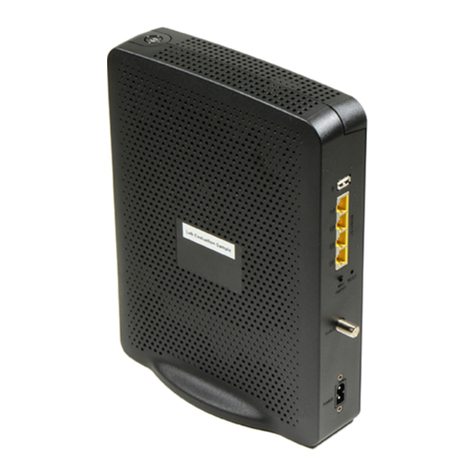
Cisco
Cisco DPC3848 Instructions for installing and activating
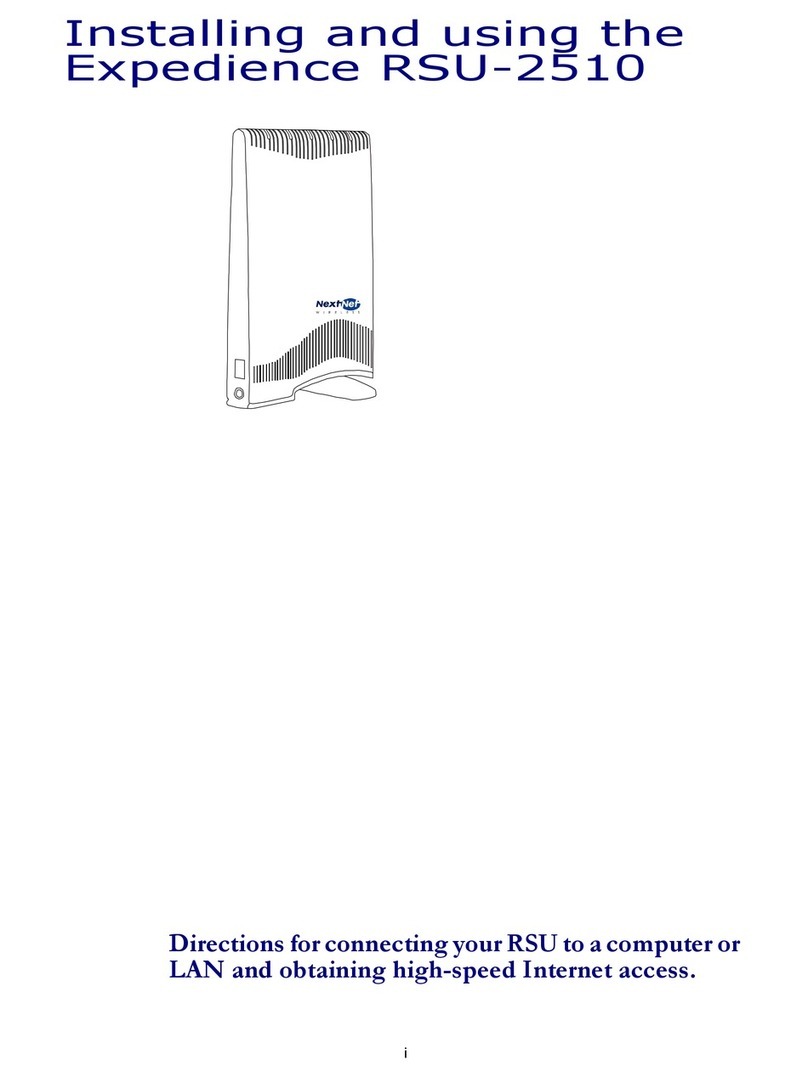
NextNet
NextNet RSU-2510 manual
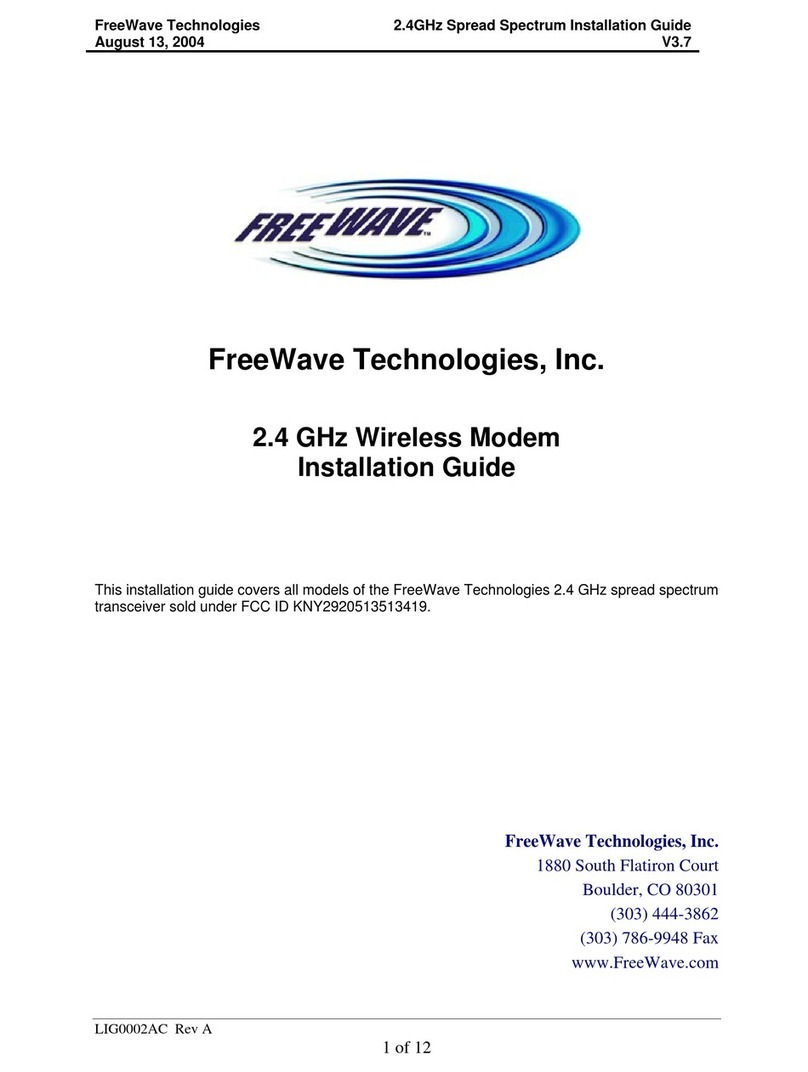
FreeWave
FreeWave 2.4 GHz Wireless Modem installation guide
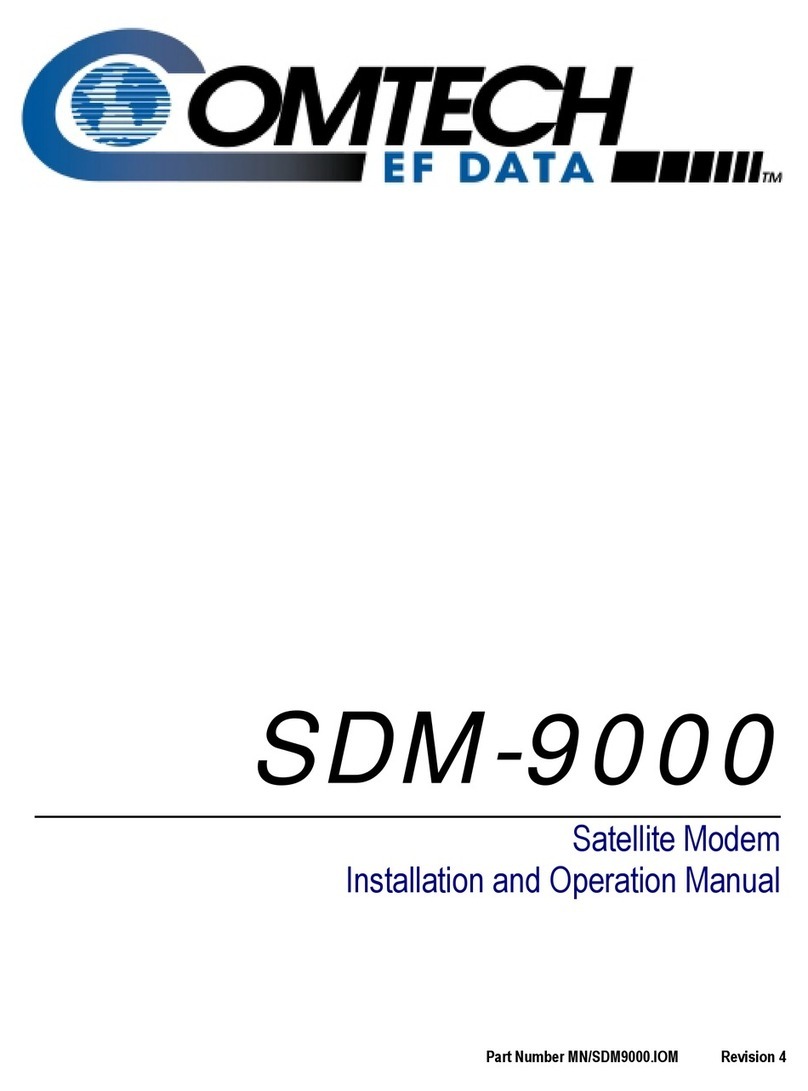
Comtech EF Data
Comtech EF Data SDM-9000 Installation and operation manual
